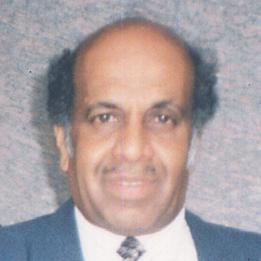
3 minute read
empty your mind and relax
from 2012-09 Sydney (1)
by Indian Link
Ancient texts exhort the neccessity of staying calm and finding serenity in the face of adversity
from correct cognition (pratyaksha) 1.6’.
In contrast, ‘false knowledge (viparyaya) is either wrong information, illusory ideas (mithya-jnanam) or notions which do not possess (pratishtham) a firm foundation (atadrupa). 1.7’.
We are living in difficult times. More tranquillisers and antidepressants are being sold than ever before. And some of these medications have been known to create more havoc, rather than soothing the recipient.
Centuries ago, the unrivalled classic of mental contemplation The Yoga Sutras of Patanjali enunciated that for any form of mental discipline, it is essential to calm or restrain (nirodhah) the fluctuations of the mind (chitta-vritti).
The world is a troubled place with the financial markets creating daily havoc, and armed conflicts not getting resolved. This coupled with the unresolved wars in a belt stretching from Turkey to Afghanistan are reflected in personal mental turmoil. Retirees see their superannuation funds dwindle, whilst those who invested in scams which were ‘too good to be true’ are affected by the financial crisis.
After gaining all the information for buying a property, the mind is bound to be in turmoil. One needs to mentally quieten down, to be able to make a sound decision. The mind needs to be emptied and relaxed.
If a troubled person sees a counsellor or a psychologist, it is very likely that the very first thing that that person will be told is to relax and to stop worrying about the problem. Very often, modern medical practice uses drugs to induce tranquillity. Centuries ago, Patanjali had spoken about drugs as a means to attaining yoga but he had frowned on such a practice.
The world is a troubled place with the financial markets creating daily havoc, and armed conflicts not getting resolved.
Still worse is the case of those who participate in the wars themselves. They and their families pay the price in mental turmoil and often in anguish. This has happened whilst the scars of the Vietnam war in Australia are still being felt.
In Australia, the younger generation (popularly called the Y-generation) are under intense pressure, for example, needing to buy the right housing, in the right suburb and at the right price. High prices in the most desirable suburbs creates the burden of repayment over the next twenty tears or so. Childcare and school fees add to the load of responsibilities. Then there are travel expenses. Many migrant groups, including Indians, are expected to make a trip occasionally to India to meet close relatives.
At this stage, it is important not to have fanciful ideas about the place one wishes to acquire. One has to live within one’s means and one should remove impractical ideas with regard to transport, schools and so on. One should remember that, as Patanjali noted, ‘fanciful ideas (vikalpah) can have their basis in verbal or rhetoric expressions (shabdajnana) which are devoid (shunya) of substance (vastu). 1.8’ Such expressions include ‘posh suburbs’ and ‘country athmosphere’.
The necessity of right knowledge at every stage of the process cannot be overemphasised. As Patanjali had said, ‘Right knowledge (pramanani) can be gained from making logical inferences (anumana), from traditional knowledge (agamah) and
Such emptying of the mind (pratyahara) is a prerequisite for mental yoga. We can envisage two levels: a simple relaxation by stopping worrying, and a higher level where one withdraws one’s senses from the external world.
The modern face of despondency and hopelessness stand in marked contrast to the emptiness or nothingness (sunyata) of mental yoga. These negative terms, for which Indian philosophers are famous, means the opposite. Nothingness for them meant an describable plenitude, that is, a fullness beyond human imagination.


The Hindu concept of sunyata or nothingness was elaborated by the Zen Buddhists and by French poets and writers as the ‘vide’; incidentally the Sanskrit term for this state is videh! At the higher level (asamprajnata samadhi) there is an absence of all modes of the mind (time, space and number) and only subconscious impressions (samsaras) are retained. This comes from the constant practice of the highest type of nonattachment, (1.18) which is not the level for the average person.
However, the average person should slow down their materialistic pursuits and remove fear, worry and anger from themselves, to remove the burdens that can overload the mind. This can free them from their shackles. For example, anger is one of the main burdens which afflict the young and the media must share a lot of the blame for that. Anger (raga in Sanskrit, similar to the English ‘rage’) goes hand-in-hand with attachment (also termed raga).
Achieving simple tranquillity can help the young as it can the old. Many of those in turmoil are today’s old people. Some of them lost substantially during the global financial crisis. Others see themselves as misfits in the modern world, and still others find it difficult to relate to their children.









